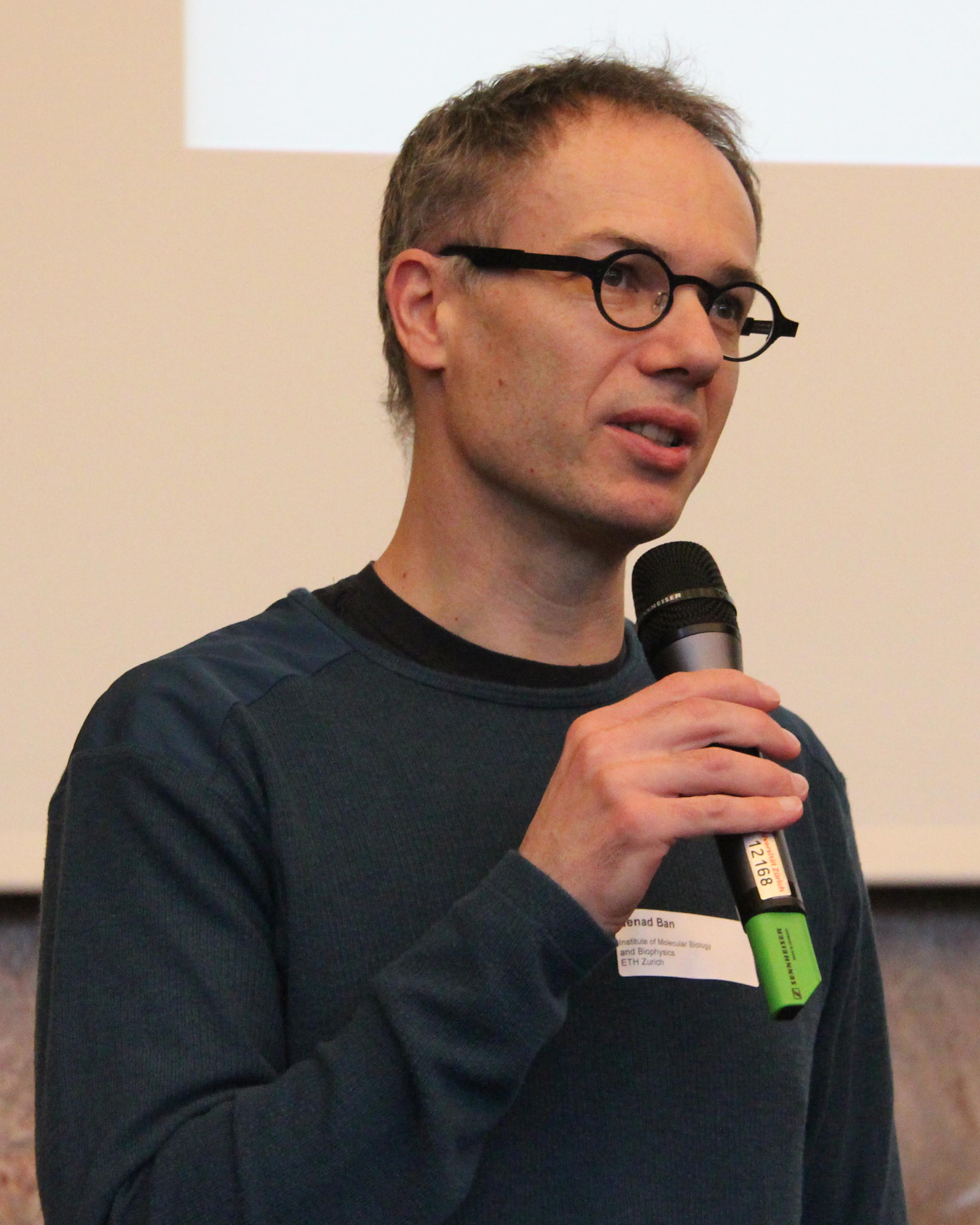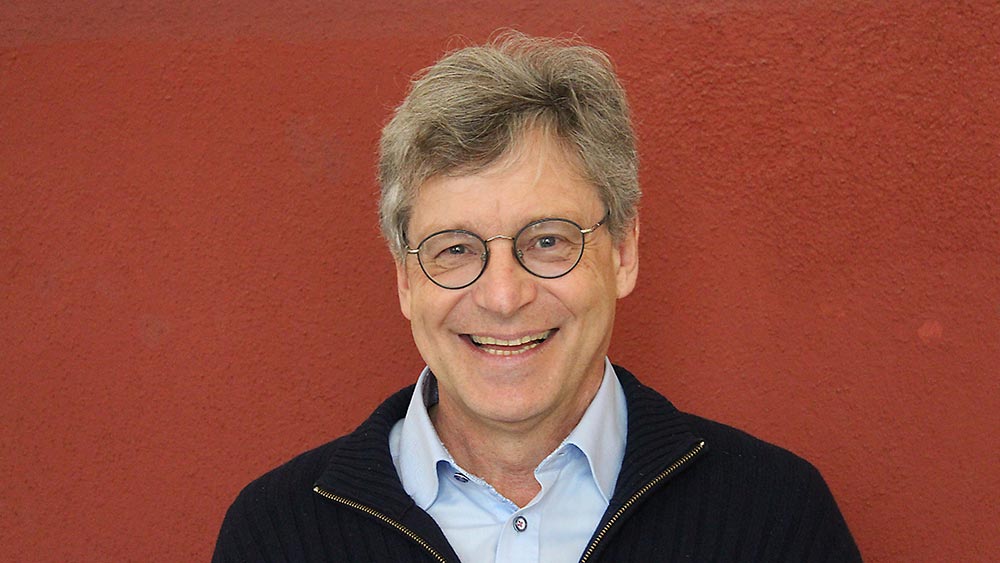Big Things Come In Small Packages
Take influenza viruses for example. When Stephen Cusack from the EMBL in Grenoble describes the molecular mechanisms that allow these dangerous pathogens to replicate in the human body, you can only listen with a mix of wonder and awe. A protein complex known as RNA polymerase is responsible for forming new particles that give rise to many thousands of viruses.
The polymerase not only generates these genomes, at the same time it prevents the host cell from expressing its own genes. Cusack is able to explain these processes step by step using 3D models, demonstrating how individual areas can twist and turn. And you have no difficulty in believing him when he says that he has spent many years working on getting a better understanding of how this polymerase works.

Cusack is one of around 250 researchers who gathered in the Aula of the UZH main building to discuss the latest trends and techniques in structural biology. Leading structural biologists from around the world came to attend the symposium hosted by the Zurich Center for Structural Biology. The healthy interest in this event was particularly pleasing for Andreas Plückthun, Professor at the UZH Department of Biochemistry, and the Co-Organizer of the Symposium Professor Nenad Ban from ETH Zurich. Ban has recently been awarded the Ernst Jung Prize for Medicine together with the Göttingen-based neuroscientist Tobias Moser.
Disassembling the Individual Components
The guiding principle of architecture is ‘form follows function’ – structural biologists essentially turn this around and examine the functions that follow forms. “By analyzing the three-dimensional atomic structure we seek to determine how biomolecules work,” says Andreas Plückthun.
Structural biology is the counterpart, so to speak, of systems biology. The latter models the dynamic interactions within a cell involving many thousands of proteins and other biomolecules and visualizes their networks – but can reveal only very little about the individual components. By contrast, structural biology focuses on individual molecules and molecular structures, which are broken down and researched to the minutest detail.
Perhaps the most famous biological structure of all – the DNA double helix – was discovered some 64 years ago in 1953, a landmark achievement that brought the researchers Francis Crick, James Watson, and Maurice Wilkins the Nobel Prize in 1962, and they rank among the best-known laureates. However, structural biologists are still working to this day on the various biomolecules this DNA packages into our cells, seeking to determine whether individual genes can be accessed and activated. “The closer you look, the more complex the picture becomes,” says Andreas Plückthun. “In many cases, we’re still only seeing little more than the tip of the iceberg,” he adds.
Essential for New Medicines
The unresolved processes are naturally a powerful source of inspiration, fueling the desire to understand more. But gaining a better understanding also has a direct benefit beyond the acquisition of knowledge: “Structure elucidation is essential when it comes to developing new medicines,” says Andreas Plückthun.
There is a particularly urgent need in the case of influenza viruses, since highly dangerous pathogens can appear at any time for which there are no vaccines. The polymerase being researched by Stephen Cusack is in fact a possible target for new active substances. Detailed analysis means it is possible to develop substances that can be specifically deployed to shut down the essential parts of the polymerase mechanism. Cusack expects it will be just a few years before we see such drugs coming to the market.
From the scientific and medical perspective, structural biology cannot be valued highly enough in Plückthun’s view, and he is therefore somewhat troubled to see this field having increasing difficulty in attracting the necessary research funding.
Thanks to the National Centre of Competence in Research Structural Biology, Zurich was able to build up an excellent platform for research and teaching. However, the NCCR expired in 2013, and Zurich is now running the risk of losing its position in this area. “We are still competitive and able to hold our own with the best locations – but for how much longer?” asks a concerned Andreas Plückthun.
